OK, this entry will take you through ancient Roma.
Perhaps the most well know monument is the Flavian Amphitheater, but because of the mammoth 100′ tall statue of Nero that used to adorn the entrance. However, today it’s simply known as the Colosseum.
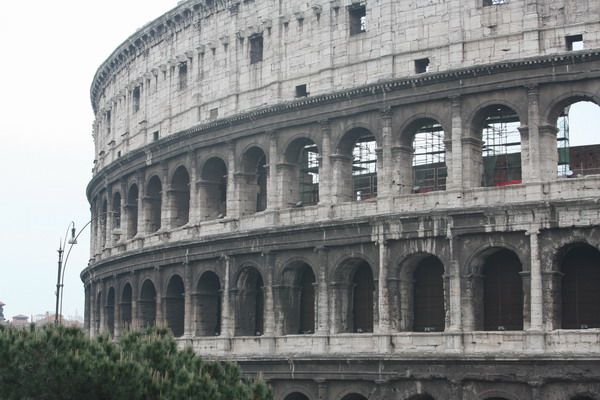
Here you can see a re-creation where the floor of the of the Colosseum was. This perspective allows you to see the inner workings below. Gladiators, or animals could be moved around under and raised up to the surface. Can you imagine seeing African animals like lions, elephants or rhinos for the first time ever as they were used in gladiatorial contests?
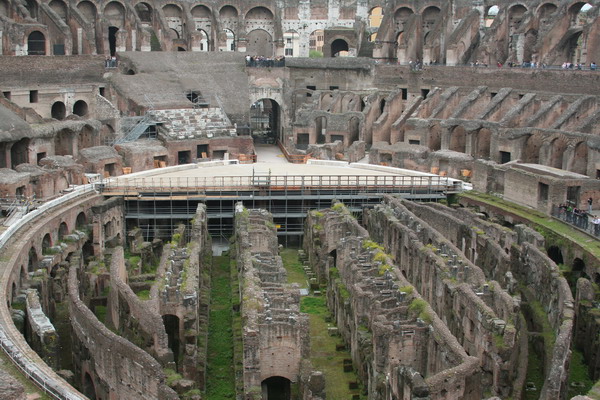
It was in use for nearly 500 years (after it was completed in 80 AD by the emperor Titus). It could hold 80,000 people. The form of the Colosseum is nearly identical to that of our modern arenas.
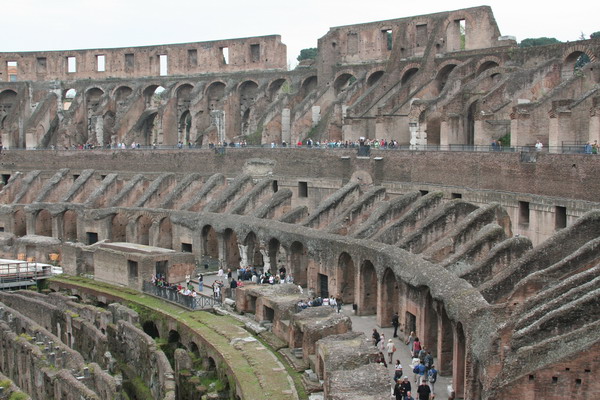
Unfortunately, earthquakes destroyed much of the south side in the mid 14th century.
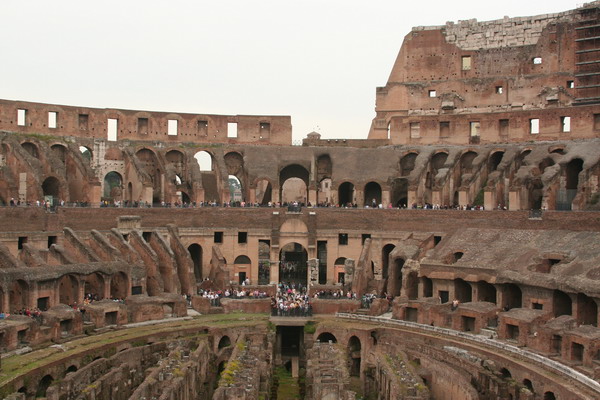
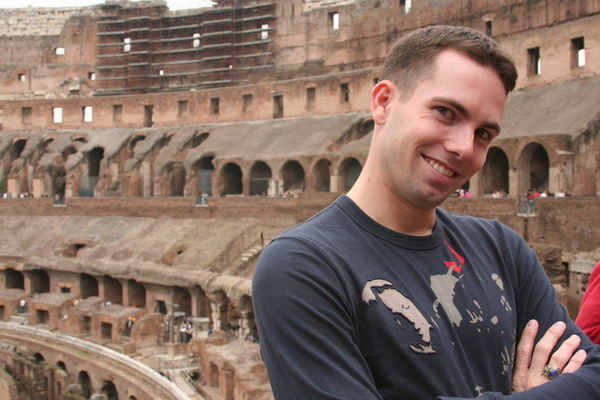
That evening, we explored several of the piazzas. This one is one of the most famous: Piazza Navona.
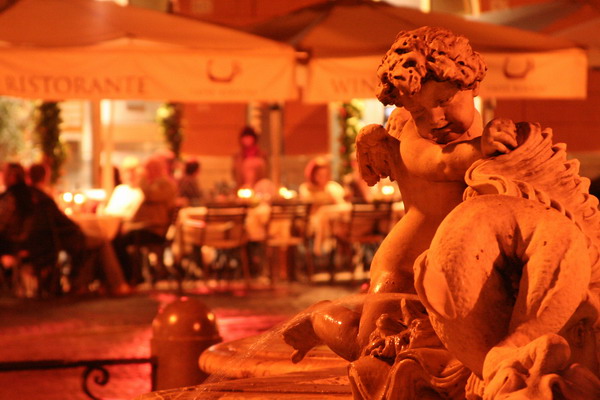
The next morning, we went to a sprawling Sunday market on the left bank of the Tiber River. We began at the Porta Portese and walked for a couple hours, but never actually reached the end. We had read it was the grandfather of flea markets, and it certainly was huge.
Next, we headed out to the outskirts of Rome to see an ancient road that connected Rome to the sea. It was designed to carry foot traffic on the sides and animal powered vehicles in the center. Here are some pictures of animal powered traffic.
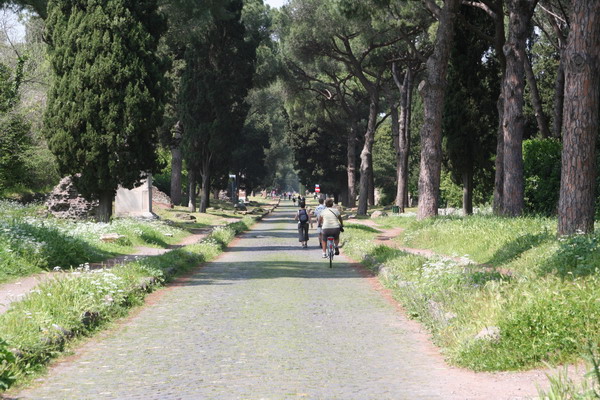
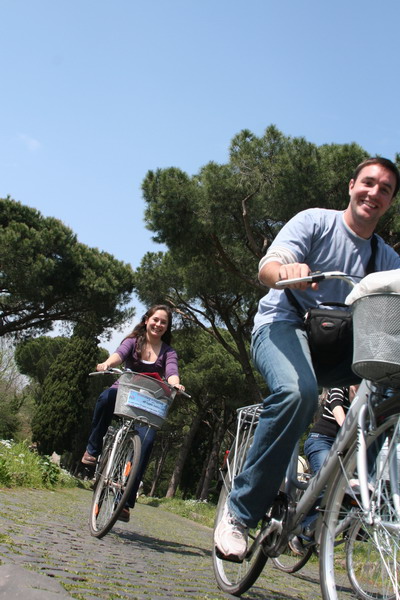
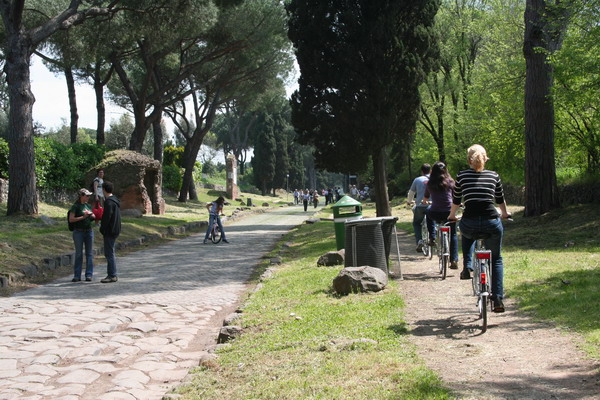
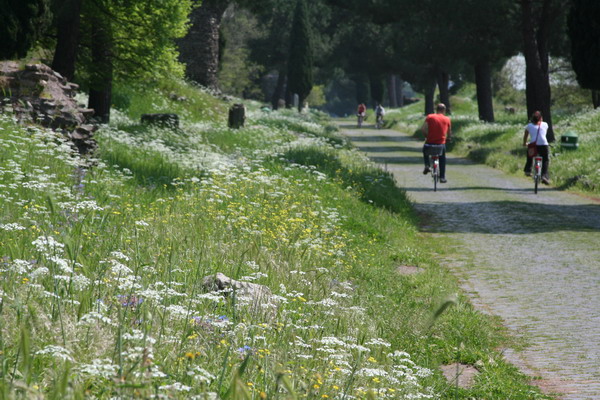
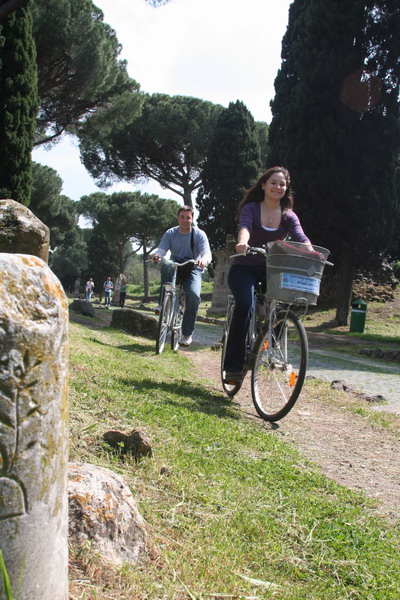
Our last afternoon was spent pursuing several fascinating museums. The first one is the National Museum of Rome.
As you can see they have a Roman copy of the famous Greek discus thrower by Myron.
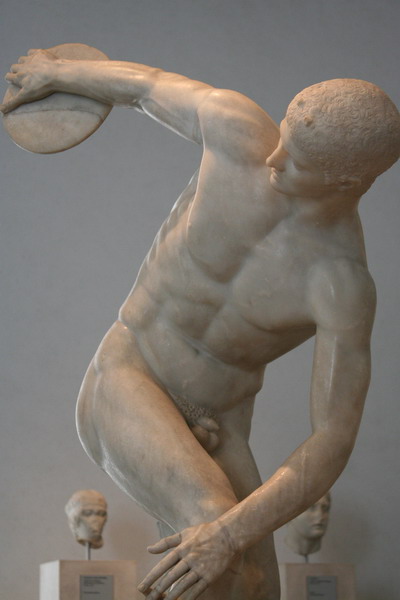
And the busts of the Caesars.

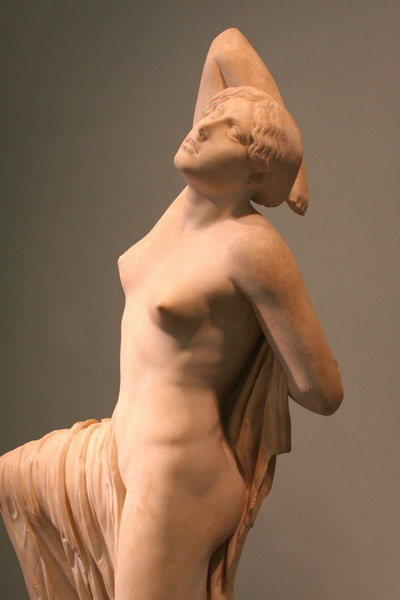
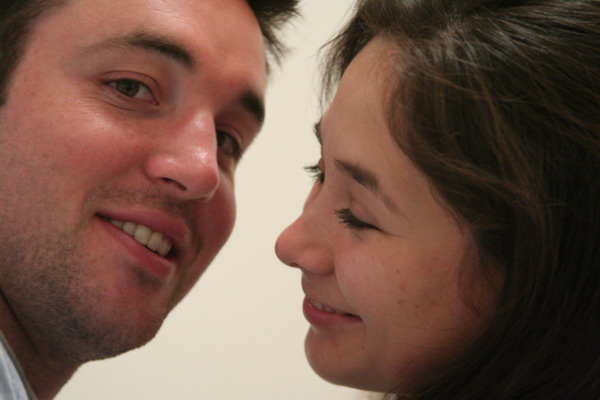
The final museum was the Borghese Gallery. Unfortunately, cameras were again not allowed inside. However, inside, it was a very pleasing blend of art in building, decorating, painting and sculpture.
Here is the outside of one of our new favorite art museums.
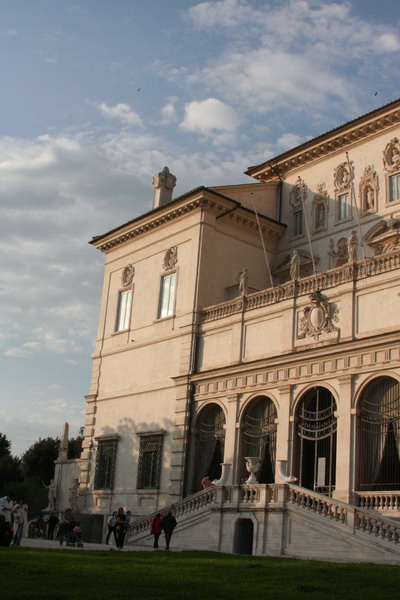
I have to add this quick addendum: for nearly a day, my batteries died. So, Jen was kind enough to let me use her camera. When I look through those images, I may add more to this post (or create another one). So, keep checking back.
Well, that concludes our experience in Rome. It was an outstanding trip and has showed us that Rome is one of our top 5 favorites cities in the world.
We have another trip planned next week to Switzerland. So, I should have some more images to share with you all soon. For those who don’t know, it looks like I will be gone for a while starting next month. So, my postings will either slow down (not that I post that often), or stop for a while. So, we will have to make this next trip memorable.
Until then…
–Jim
Month: April 2007
Rome — Center of the ancient world
This past weekend we visited the amazing and ancient city of Rome with our friends Jen and Andy. If you enjoy history, this city is rife with it (and consequently this post as well).
The history of Rome is incredibly long and storied. I won’t belabor you with a long history of the city, but suffice it to say it’s interesting.
We began our (all too brief) three day tour with a stop by the rather macabre display called the Cappucin Crypt. It is a rather artful display of the bones of about 4,000 monks of the Cappucin order. Other than being the namesake for Cappuccino, these monks from the mid-16th century up till 1870 chose to have their remains placed on display.
The heading takes a somewhat less spiritual approach: “You are what we were; You will be what we are.” Rather poignant.
Next, it was on to the happier and better known, Spanish Steps, also known as Piazza di Spagna. It’s so named for the Spanish Embassy that was next to the Piazza.
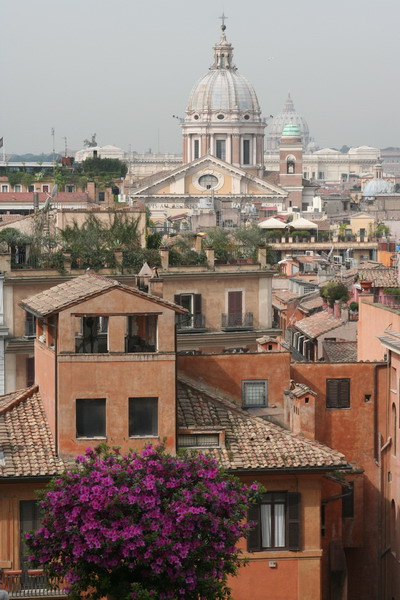
There are 138 steps leading up, away from the house where the English poet John Keats lived in the early 19th century. Anna caught me making a picture of Jen and Andy here.
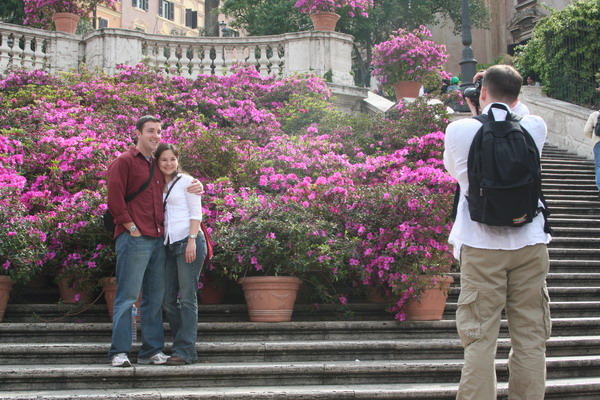
Do you know what the smallest country in the world is? Sizing up at a whopping 100 acres, is the Vatican City, with it’s paltry 980 residents. However, for many centuries, this small city state was the seat of power for the western world. Also known as the Holy See, the Vatican was granted autonomy through the Lateran Treaty, which was signed by the Vatican, the Italian king, as well as the fascist Prime Minister and de facto dictator, Benito Mussolini. Today, the Holy See is a full, but non-voting member of the United Nations and has pledged permanent neutrality in political affairs.
Since there about 54 galleries in the Vatican Museum (including the Sistine Chapel), we decided a tour guide was in order. Plus, with average of 15,000 visitors per day someone to lead us through the chaos was certainly appreciated. Here is our guide who also happened to be from Michigan.
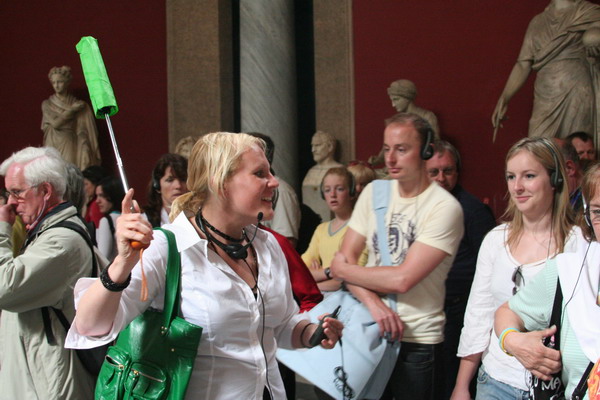
As we traversed the museums, there were exquisite paintings and sculptures that have been accumulated over the museum’s 500 year history (although only 236 years have been as an official museum, but the 500th anniversary was celebrated in October 2006).
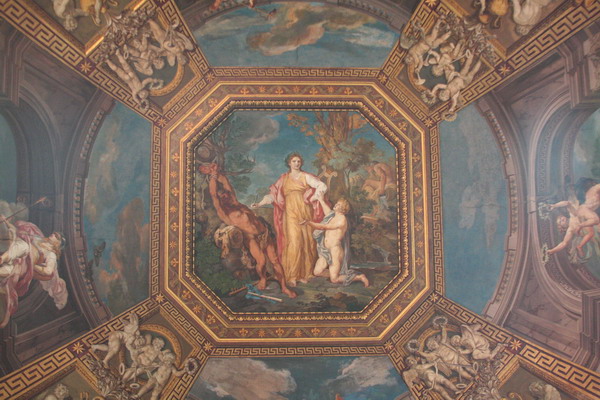
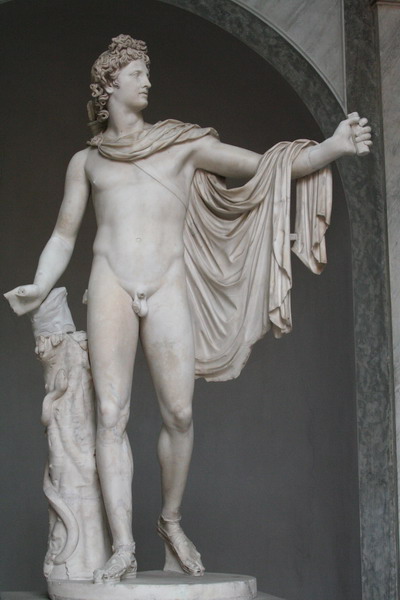
Some of the sculpture had crystal eyes, which added a startling amount of realism.
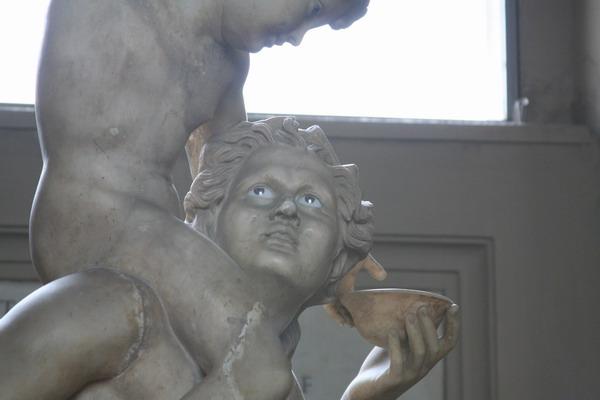
These tapestries were woven by some of the same Dutch masters we saw in Belgium.
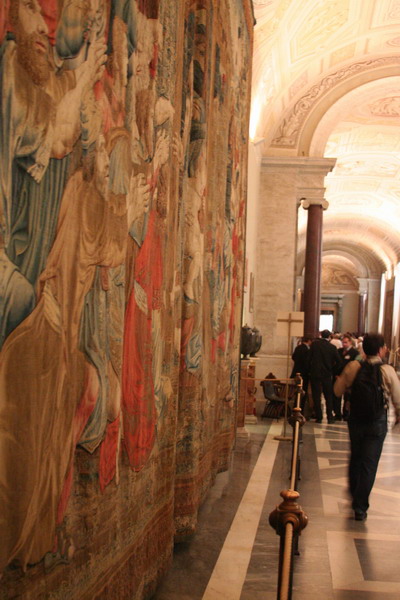
This room is known as the Gallery of Maps (also a nice perspective on the volume of people who pass through the galleries).
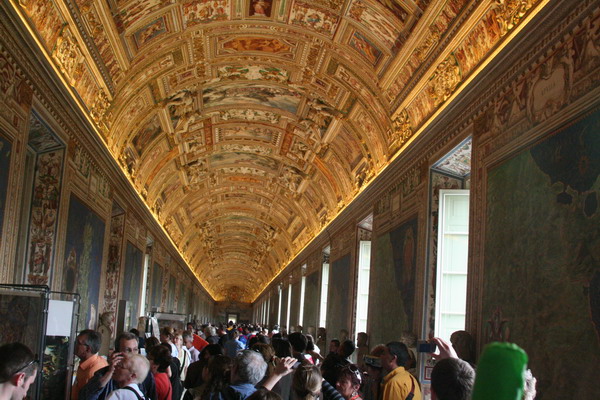
The final stop through the museum was the amazing Sistine Chapel. Functionally, this is where the papal conclave is held to elect a new pope. The current procedure to do that was established in 1274. In April 2005, Joseph Ratzinger was elected Pope Benedict XVI, by a group of cardinals in this room. In the corner, there is a small furnace where the secret ballots are burned. This is how the outside world knows when a new pope has been elected. If the smoke burns black, there must be another vote. If it is white, a new pope has been chosen by a majority vote. Interestingly, since the year 533, a pope also chooses his papal name. Pope John II was originally Mercurius, but since Mercury was also a messenger of the Roman gods, he decided it would be inappropriate to keep that name. However, it is not required to change your name, but the last pope to rule under his birth name was Pope Marcellus II in 1555.
Aesthetically, although I was familiar with the masterpiece ceiling and frescoes of Michelangelo Buonarroti, I didn’t really know the history of it, nor did I truly appreciate the scope in my mind. Although Michelangelo believed himself to be a better sculptor, he accepted a commission from Pope Julius II to paint the ceiling, which he did over four years from 1508 – 1512. Then, later from 1535 – 1541 he was commissioned by Pope Paul III to paint the Last Judgment over the alter. Perhaps the most famous part of the ceiling is the panel in which God is depicted creating Adam with his outstretched finger. Unfortunately, pictures were not allowed in the chapel (although that didn’t stop all too many tourists from snapping away). So, I don’t have any images to share with you. However, it was awe inspiring just to stand in that magnificent room.
Next, we moved out of the museum and into the largest and most impressive church in the world, St. Peter’s Basilica. It stands on the site where Saint Peter was laid to rest in 64 AD. A small shrine was built on the site. When Constantine made Christianity the state religion of Rome, he built a church on the same site. Then, in the mid 15th century when Pope Nicolas V decided to create the largest and grandest church in the world. However, it wasn’t until 1506 that it was officially begun by Pope Julius II, then not until 1626 was it finally completed. To further the idea that Michelangelo was a true Renaissance Man, he aided in the design and was the chief architect for the final 18 years of his life. Unfortunately, he never saw his design come to fruition.
With that, let us enter this grand edifice.
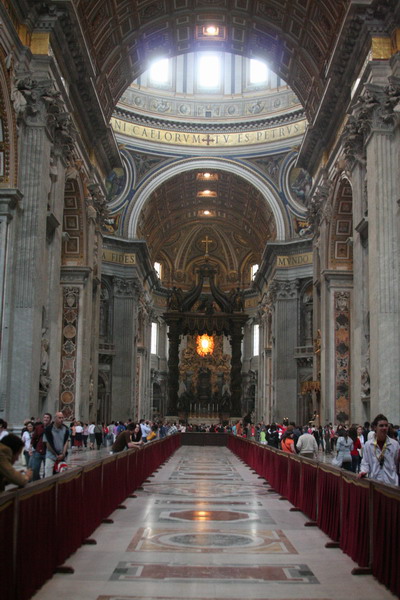
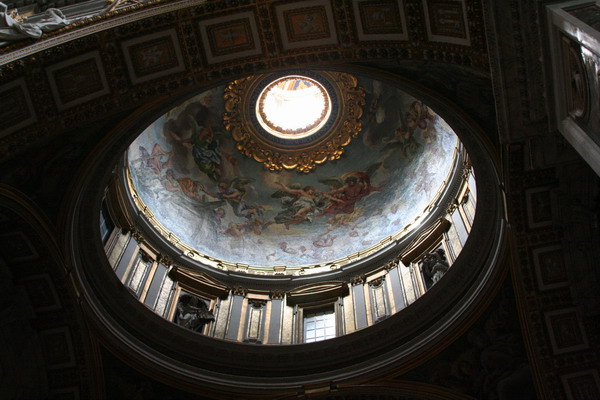
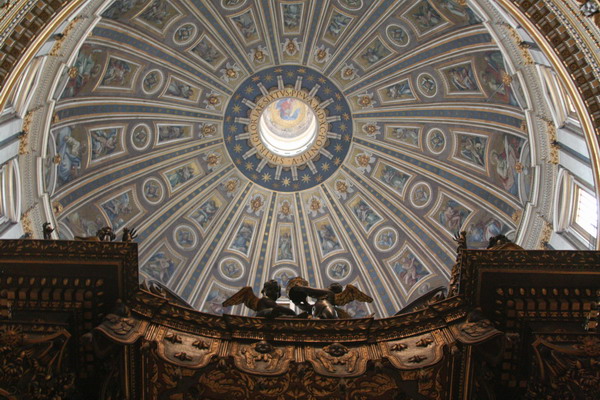
Here is the alter of St. Peter’s.
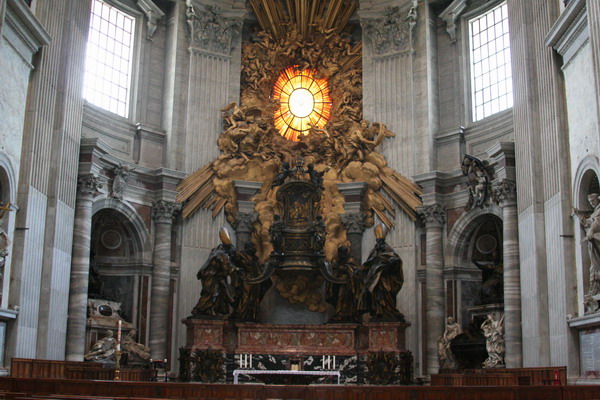
When Michelangelo was only 24 years old (in 1499), he carved the Pietà of a youthful Mary holding a crucified Jesus.
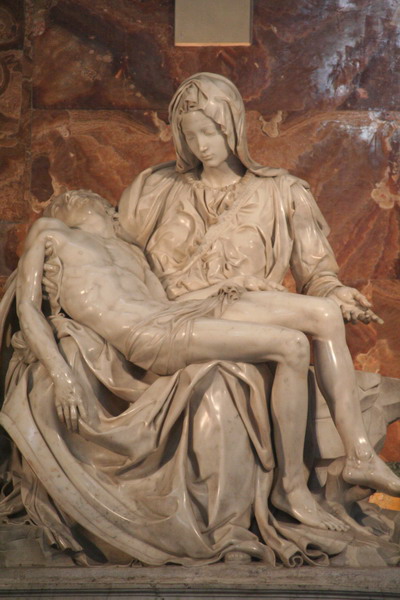
There is also a large statue of St Peter. This statue predates the current basilica and was in the first church.
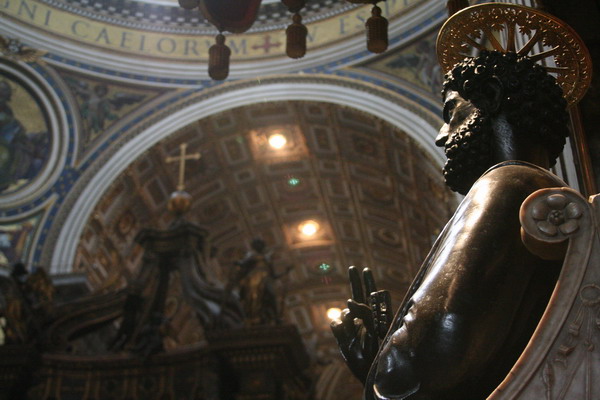
As you can see, people enjoy touching his feet.
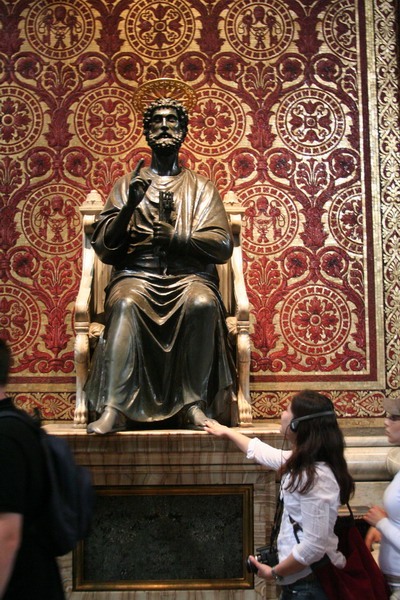
His right foot is so well worn, that the toes aren’t even visible anymore.

There was also a unique statue of Mary holding the shroud of Jesus with his likeness on it.
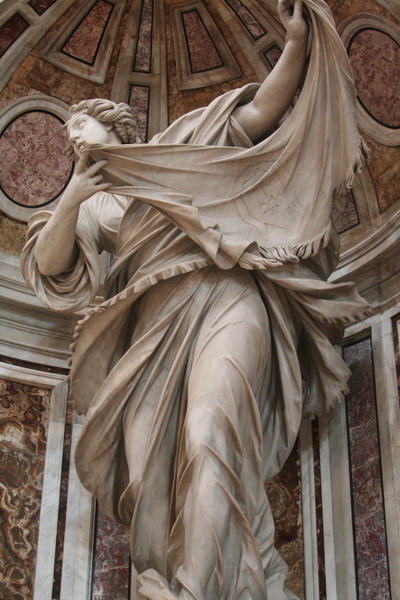
Next, we took a journey up the 323 stairs to the top of the dome.
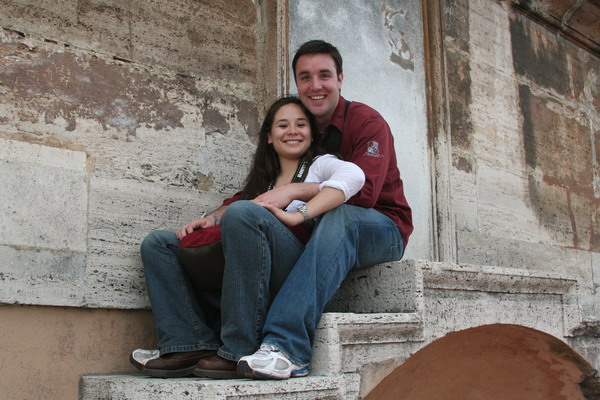
You can see that the dome has a double wall. Since the shape is parabolic, as we climbed higher, the walls curved steeper to the peak. It gave an interesting feeling as we went higher.
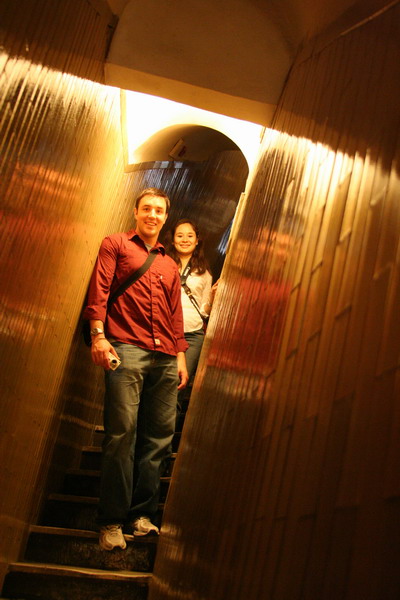
The view from the top afforded a great perspective of the Roman skyline. Here you can see Bernini’s St. Peter’s Square.
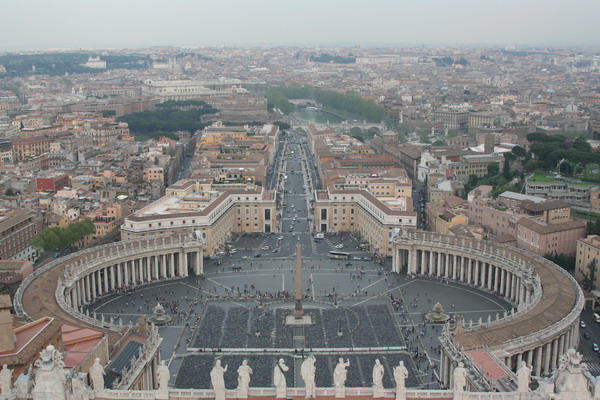
As we exited the church, we saw some of the Swiss guards who have protected the Holy See for the last 500 years. Their uniforms were purported to be designed by Michelangelo…
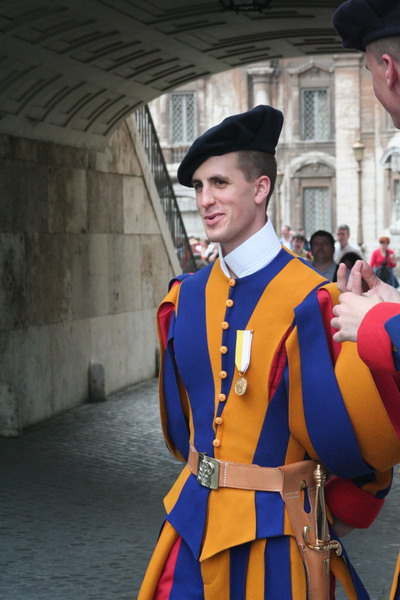
Then, back down in the square, we looked back up to see the square and Dome of St. Peters.
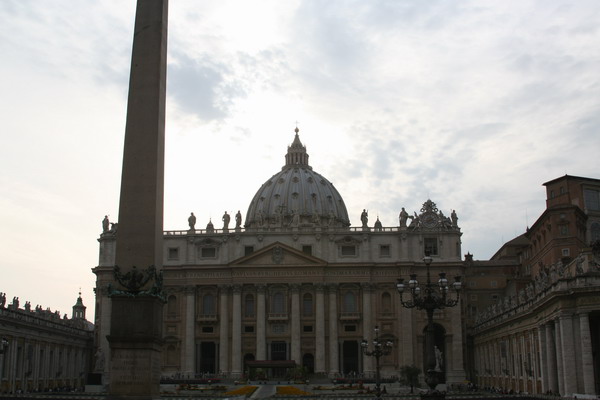
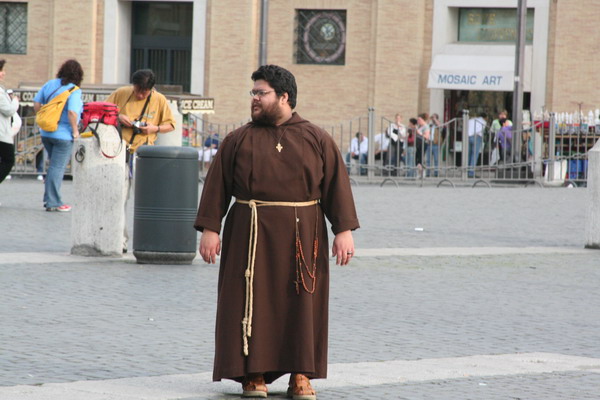
Dinner at the outdoor cafe was perfect.
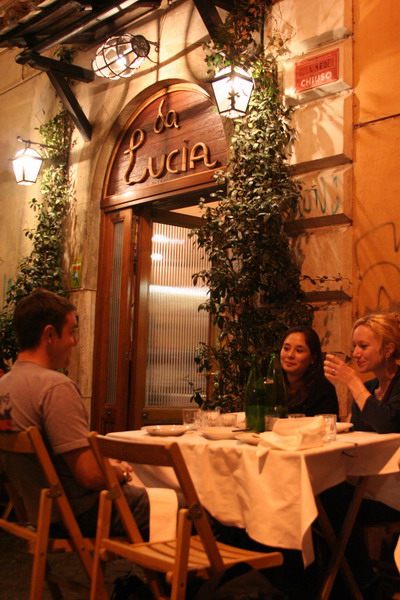
Then, over to the famous Trevi Fountain. It was complete in 1762 and is powered solely by the aqueduct it taps into (with no pumps to aid its flow).
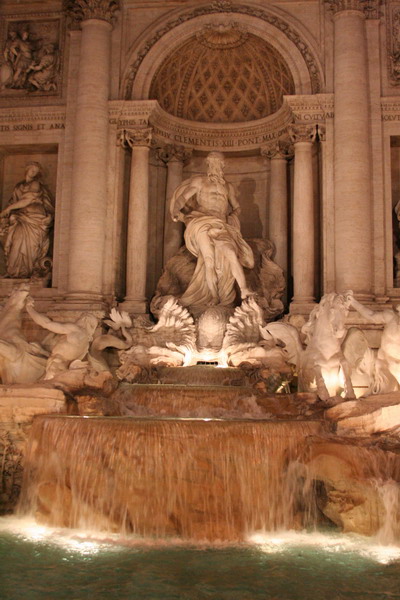
There were plenty of other people there to enjoy it with us.
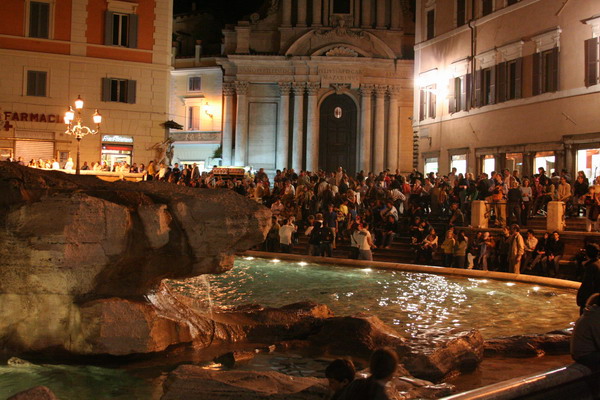
Including Jen and Andy.
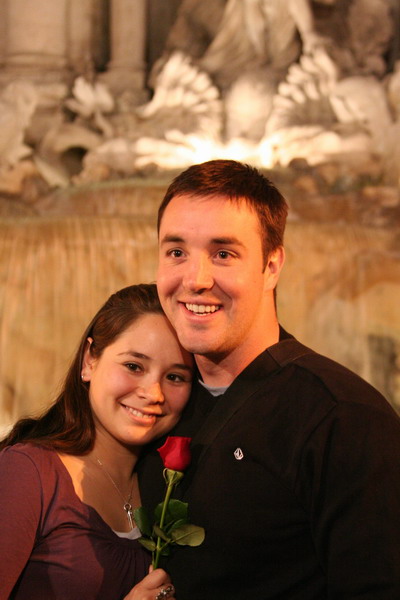
So, that concluded our first day in Roma. The next two were similarly spectacular and filled with historical discovery.
So, until then…
–Jim
The Netherlands in Bloom
***This post is a little large (~4MB). If you can’t load it right away, just refresh the page and it should work the second time…***
The Netherlands in the spring is truly a sight to behold. The countryside is awash in colors. In particular the small town of Lisse has the spectacular park of Keukenhof. Supposedly, it’s the world’s largest flower garden. With 700,000 visitors during its 2 month season, many people agree that it’s worth a visit.
However, the fields of the village have seemingly endless rows of flowers as well. Here are a few of my favorites of the village.
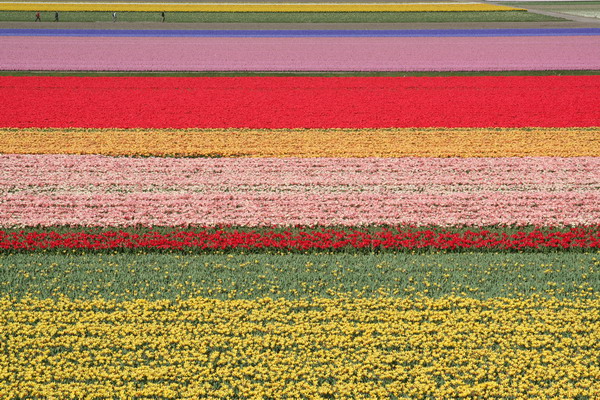
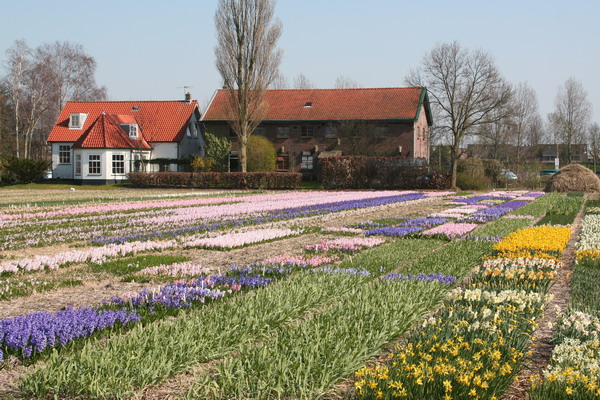

Here are some of the images from our tour of this lovely garden. I won’t belabor the images with a lot of commentary, I will let the pictures speak for themselves.
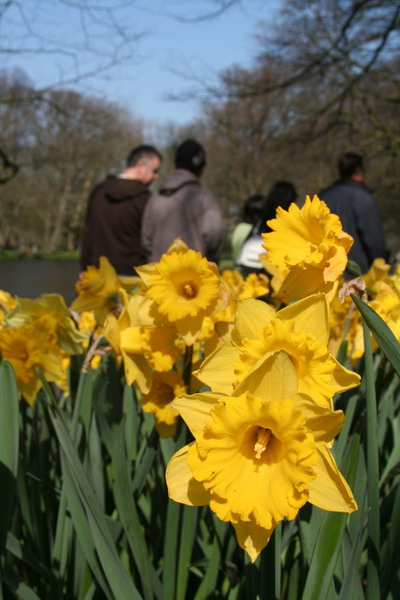
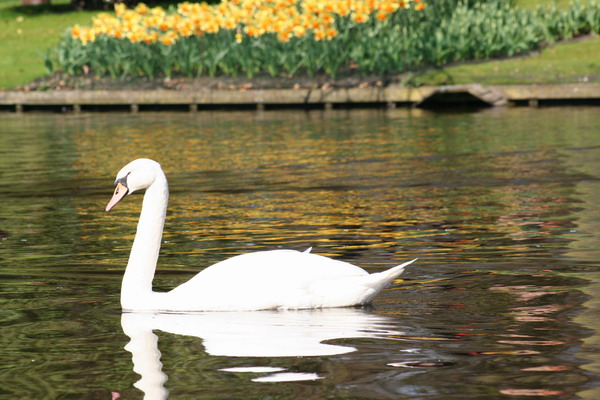


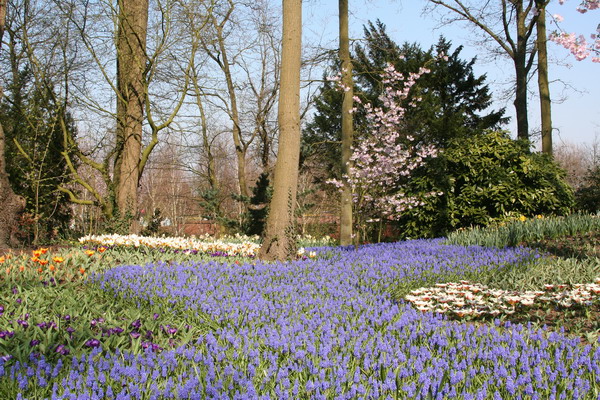

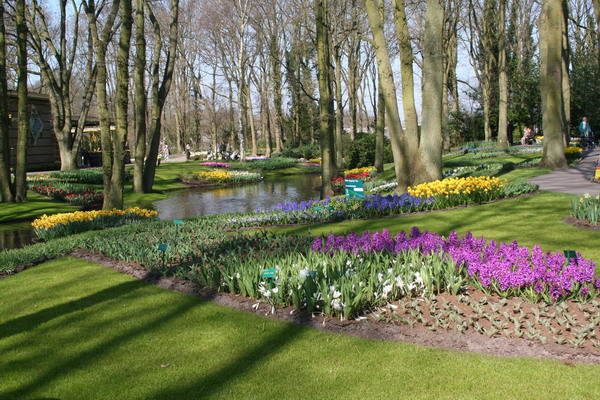
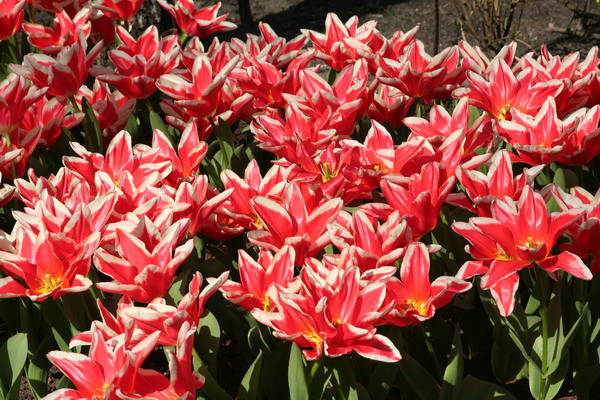
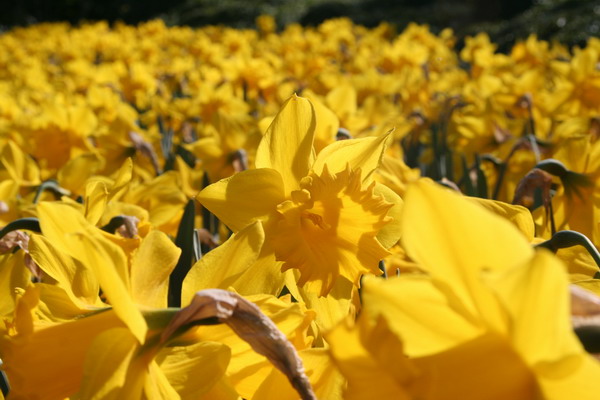
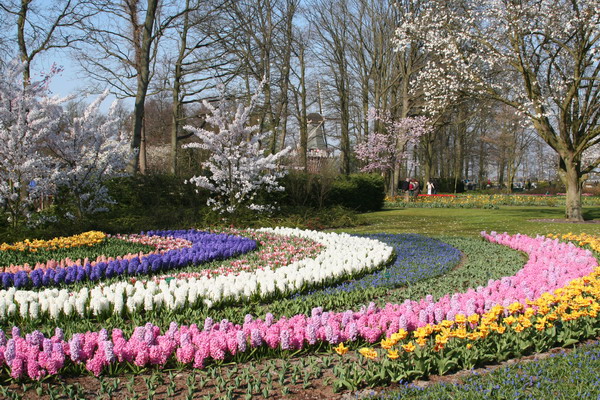


I love that Anna stops to smell the flowers…
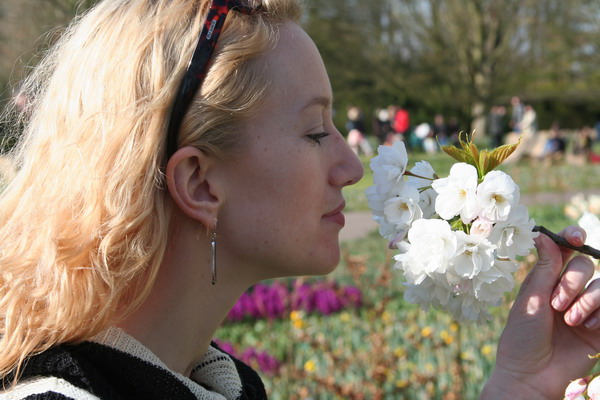
This fat bumblebee doesn’t look like he should fly. He has had a bit too much pollen today.
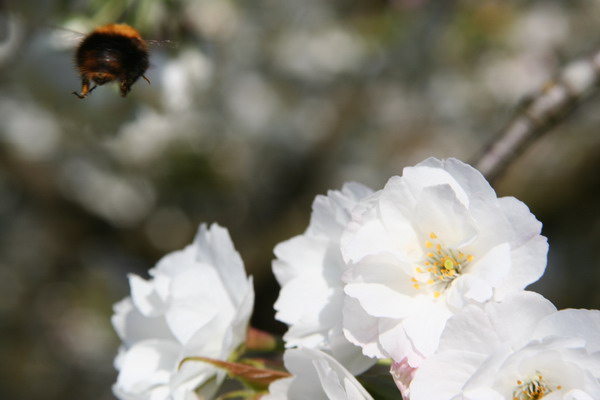
These are our friends, Andras and Elvi. They have a really unique story: he is Hungarian, she is Israeli and they are married and live in Luxembourg, but are moving to Belgium. We randomly met them in a Luxembourg cafe after watching a movie. We started chatting and hit it off right away. So, we decided to meet up in the Netherlands to check out the flowers for a weekend.
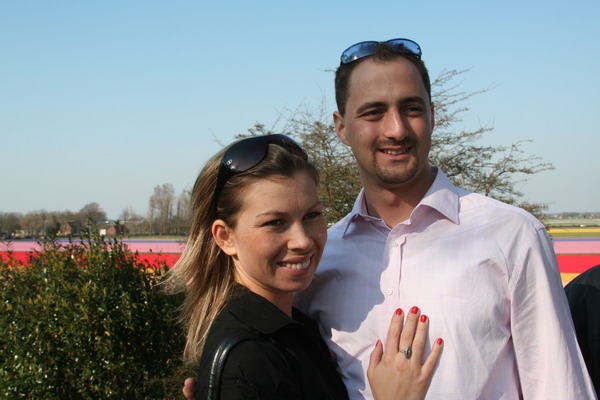
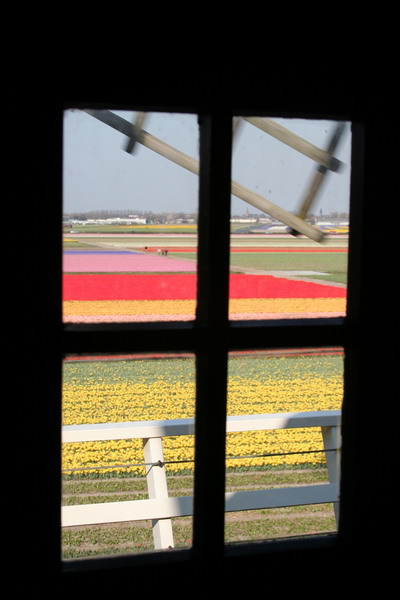
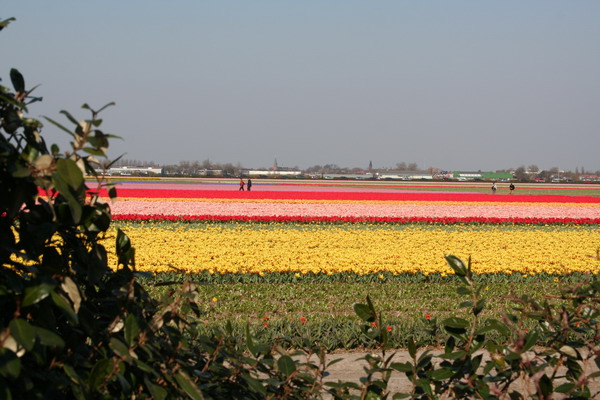
Here’s another good idea for other parks out there. Put a nice comfy couch and people will just hang out…
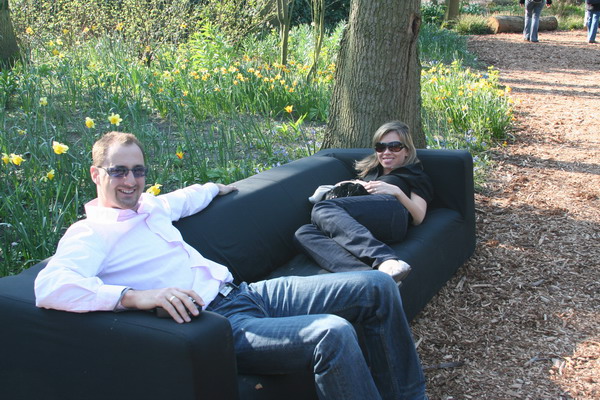

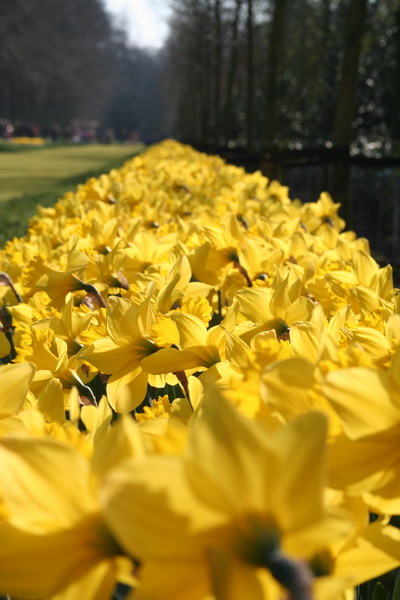
The other really cool activity we did in Amsterdam was rent bikes. It is THE mode of transportation. It’s so convenient to hop on a bicycle, use one of the ubiquitous bike lanes and you can get from one side of the city center to the other in about 15 minutes.
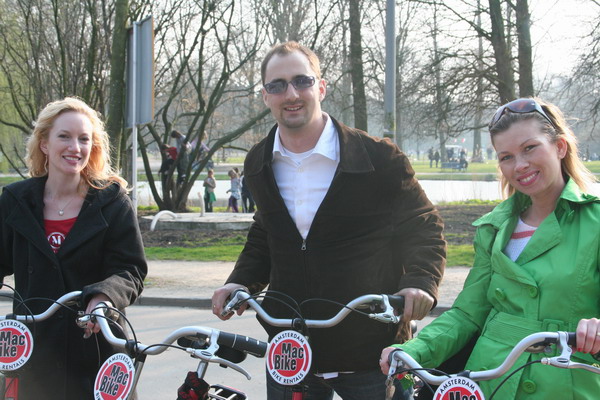
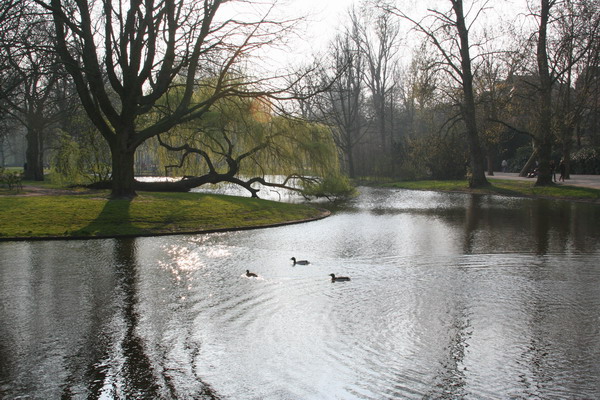
The people watching was lots of fun…
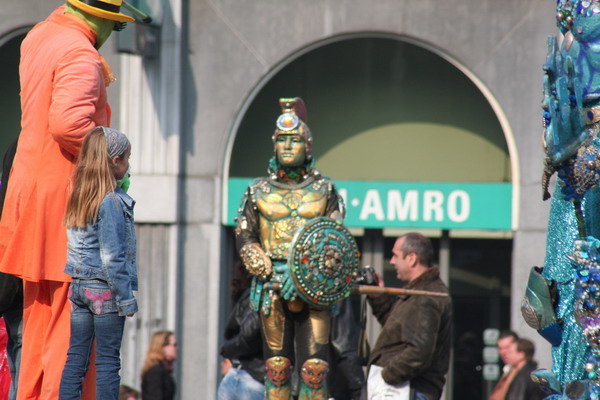
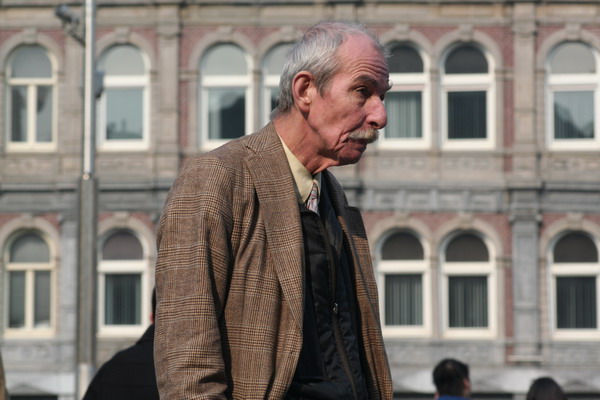
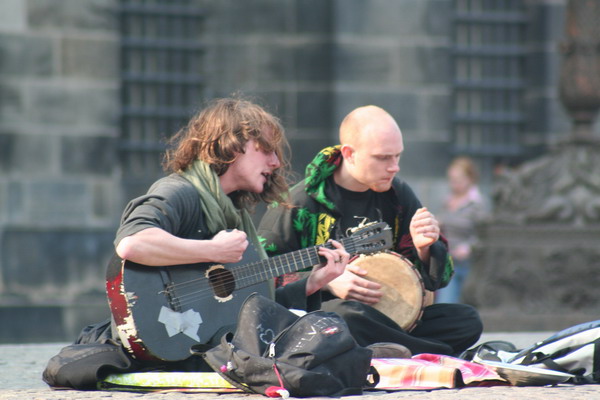
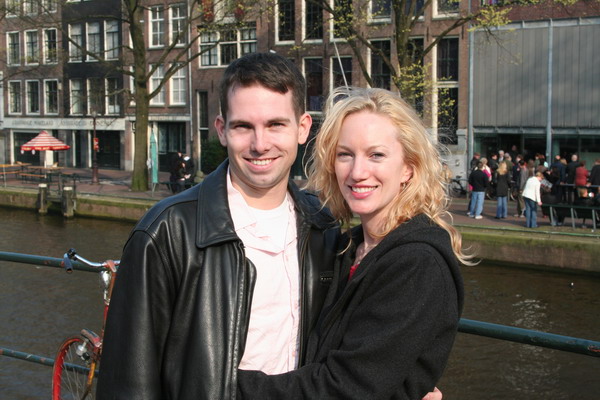
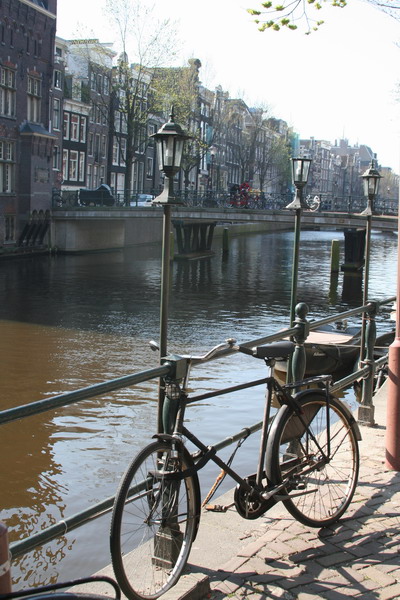
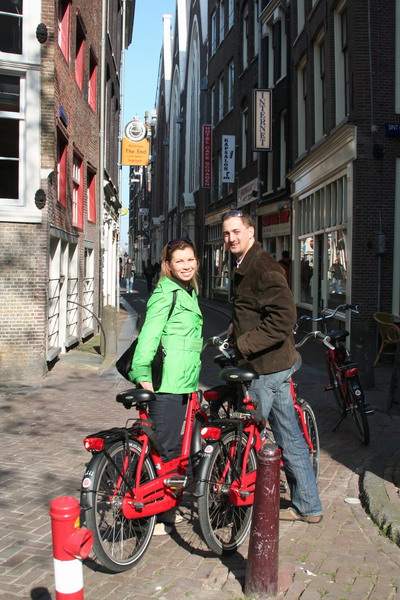
The cafes were also lots of fun.
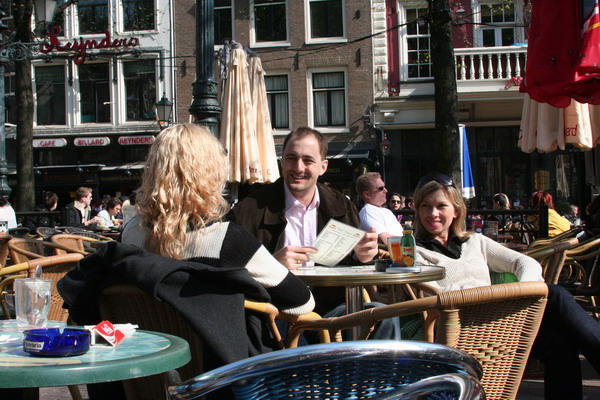
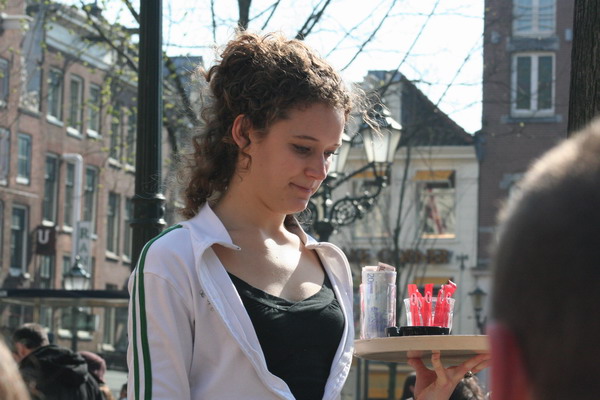
This cool puppy was actually wearing his shades (not just for the picture). He and his owner had matching glasses.

Amsterdam is a city that has so much going on. We could have stayed for 2 weeks and not run out of things to do. I think this may be our favorite spring destination. For me, it’s on my top five list of favorite cities in the world. We can’t wait to go back again soon!
Until then…
–Jim
